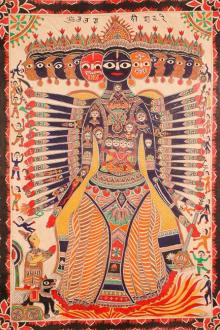St. George for England, G. A. Henty [book suggestions txt] 📗

- Author: G. A. Henty
Book online «St. George for England, G. A. Henty [book suggestions txt] 📗». Author G. A. Henty
The river Somme now barred the passage of Edward. Most of the bridges had been destroyed, and those remaining were so strongly fortified that they could not be forced.
The position of the English was now very critical. On one flank and in front were impassable rivers. The whole country was in arms against them, and on their rear and flank pressed a hostile army fourfold their strength. The country was swampy and thinly populated, and flour and provisions were only obtained with great difficulty. Edward, on finding from the reports of his marshals who had been sent to examine the bridges, that no passage across the river could be found, turned and marched down the river towards the sea, halting for the night at Oisemont.
Here, a great number of peasantry attempted a defence, but were easily defeated and a number of prisoners taken. Late in the evening the Earl of Warwick, who had pushed forward as far as Abbeville and St. Valery, returned with the news that the passages at those places were as strongly guarded as elsewhere, but he had learnt from a peasant that a ford existed somewhere below Abbeville, although the man was himself ignorant of its position.
Edward at once called the prisoners belonging to that part of the country before him, and promised to any one who would tell him where the ford lay his freedom and that of twenty of his companions. A peasant called Gobin Agase stepped forward and offered to show the ford, where at low tide twelve men could cross abreast. It was, he said, called “La Blanche Tache”.
Edward left Oisemont at midnight and reached the ford at daylight. The river, however, was full and the army had to wait impatiently for low tide. When they arrived there no enemy was to be seen on the opposite bank, but before the water fell sufficiently for a passage to be attempted, Sir Godemar du Fay with 12,000 men, sent by King Phillip, who was aware of the existence of the ford, arrived on the opposite side.
The enterprise was a difficult one indeed, for the water, even at low tide, is deep. Godemar du Fay, however, threw away part of his advantage by advancing into the stream. The English archers lined the banks, and poured showers of arrows into the ranks of the enemy, while the Genoese bowmen on their side were able to give comparatively little assistance to the French.
King Edward shouted to his knights, “Let those who love me follow me,” and spurred his horse into the water. Behind him followed his most valiant knights, and Walter riding close to the Prince of Wales was one of the foremost.
The French resisted valiantly and a desperate battle took place on the narrow ford, but the impetuosity of the English prevailed, and step by step they drove the French back to the other side of the river. The whole army poured after their leaders, and the French were soon entirely routed and fled, leaving two thousand men-at-arms dead on the field.
King Edward, having now freed himself from the difficulties which had encompassed him on the other side of the river, prepared to choose a ground to give battle to the whole French army.
Louis had advanced slowly, feeling confident that the English would be unable to cross the river, and that he should catch them hemmed in by it. His mortification and surprise on finding, when he approached La Blanche Tache, that twelve thousand men had been insufficient to hold a ford by which but twelve could cross abreast, and that his enemy had escaped from his grasp, were great. The tide had now risen again, and he was obliged to march on to Abbeville and cross the river there.
King Edward now advanced into the Forest of Cressy.
Hugh de le Spencer, with a considerable force, was despatched to Crotoy, which he carried by assault after a severe conflict, in which four thousand of the French men-at-arms were slain. The capture of this city removed all danger of want from the army, for large stores of wine and meal were found there, and Sir Hugh at once sent off a supply to the tired army in the field.
The possession of Crotoy and the mouth of the Somme would have now rendered it easy for the English monarch to have transported his troops to England, and to have returned triumphant after the accomplishment of his extraordinary and most successful march through France. The army, however, was elated by the many great successes it had won, he was now in Ponthieu, which was one of his own fiefs, and he determined to make a stand in spite of the immense superiority of the enemy.
Next morning, then—Friday the 25th of August, 1346—he despatched the Earl of Warwick with Godfrey of Harcourt and Lord Cobham, to examine the ground and choose a site for a battle.
The plan of the fight was drawn out by the king and his councillors, and the king yielded to the Black Prince the chief place of danger and honour placing with him the Earl of Warwick, Sir John Chandos, and many of his best knights.
The ground which had been chosen for the battle was an irregular slope between the forest of Cressy and the river Maie near the little village of Canchy. The slope looked towards the south and east, from which quarters the enemy was expected to arrive, and some slight defences were added to the natural advantages of the ground.
On the night of the 25th all the principal leaders of the British host were entertained by King Edward. Next morning, Mass was celebrated, and the king, the prince, and many knights and nobles received the Sacrament, after which the trumpet sounded, and the army marched to take up its position. Its numbers are variously estimated, but the best account puts it at about 30,000 men which, considering that 32,000 had crossed the Channel to La Hogue, is probably about the force which would have been present allowing that 2000 had fallen in the various actions or had died from disease.
The division of the Black Prince consisted of 800 men-at-arms, 4000 archers, and 6000 Welsh foot. The archers, as usual, were placed in front, supported by the light troops of Wales and the men-at-arms; on his left was the second division, commanded by the Earls of Arundel and Northampton; its extreme left rested on Canchy and the river, and it was further protected by a deep ditch; this corps was about 7000 strong.
The king himself took up his position on a knoll of rising ground surmounted by a windmill, and 12,000 men under his personal command were placed here in reserve.
In the rear of the Prince's division an enclosure of stakes was formed; in this, guarded by a small body of archers, were ranged the wagons and baggage of the army, together with all the horses, the king having determined that the knights and men-at-arms on his side should fight on foot.
When the army had taken up its position, the king, mounted on a small palfrey, with a white staff in his hand, rode from rank to rank exhorting his soldiers to do their duty gallantly. It was nearly noon before he had passed through all the lines, and permission was then given to the soldiers to fall out from their ranks and to take refreshments while





Comments (0)